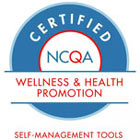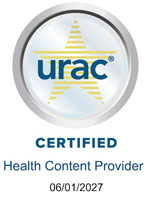Carbon monoxide (CO) is a gas produced by burning of fuels, such as gasoline, kerosene, or wood. Carbon monoxide has no color or odor. If it builds up in an enclosed area without enough ventilation, it can be poisonous to humans. It often results from poorly maintained home furnaces. It can also be caused by portable stoves or heaters, gasoline engines, and smoke from house fires.
Babies and young children are very vulnerable to CO poisoning. Symptoms may include:
-
Irritability
-
Headache
-
Nausea and vomiting
-
Dizziness
-
Drowsiness
-
Vision changes
-
Shortness of breath
Severe CO poisoning can lead to a coma or even death. A child with severe CO poisoning may have:
-
Bright red lips
-
Pale skin with a blue tint
-
Weak muscles
-
Confusion
-
Hallucinations
-
Seizures
Never ignore symptoms of CO poisoning.
Diagnosis and treatment
Your child can have a blood test done to check the CO level of their blood. But the results don't always correlate with the severity of symptoms. Treatments for higher than normal levels of CO include getting fresh air and high concentrations of supplemental oxygen. Severe carbon monoxide poisoning may require treatment in a hyperbaric oxygen chamber.
Home care
-
Your child should rest until symptoms are gone and they're feeling fully back to normal again.
-
Keep your child away from smoke, especially tobacco smoke. Tobacco smoke is a source of carbon monoxide.
-
If any medicines are prescribed, give them to your child as directed.
Preventing carbon monoxide poisoning
-
Make sure there is enough fresh air in any area that has a lit fire. This includes rooms and outdoor areas with wood or gas fireplaces, fire pits, and stoves. Don't use portable heaters, stoves, grills, or gasoline engines (like cars or generators) in poorly ventilated areas.
-
Have all fuel-burning appliances checked by a professional at the start of every cold-weather season. This includes furnaces, water heaters, and ovens. Newly installed heaters must be vented according to the manufacturer's specifications. Make sure you know how to use these appliances in a way that helps prevent CO poisoning.
-
Have your car exhaust inspected regularly.
-
Install a CO detector in your home. Make sure it meets Underwriters' Laboratories (UC) standards. Choose one that's battery-operated or has a battery back-up. Replace the battery once a year, such as when you change the time on your clocks each spring and fall.
-
To learn how to reduce your risk for CO poisoning, visit the Consumer Product Safety Commission at www.cpsc.gov or call 800-638-2772.
Follow-up care
Follow up with your child's healthcare provider, or as directed.
Call 911
Call
-
Doesn't return to normal within 24 hours of starting treatment
-
Has poisoning symptoms that return
-
Is irritable or abnormally fussy
-
Complains of a headache or dizziness
-
Has an upset stomach (nausea) or vomiting
-
Is very sleepy
-
Has trouble seeing or breathing
-
Has pale, blue-tinted skin
-
Has bright red lips
-
Has personality changes
-
Is confused or has memory loss
-
Has shaking (tremors), seizures, or loss of consciousness
Featured in

